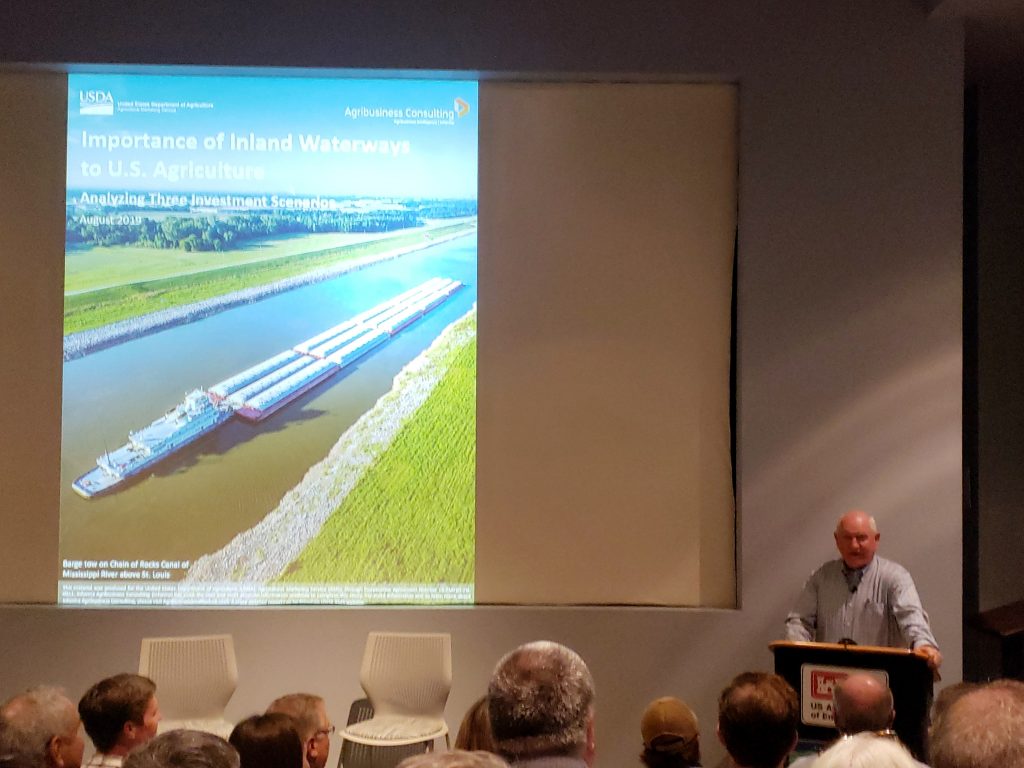On Wednesday, U.S. Department of Agriculture Secretary Sonny Perdue and Assistant Secretary of the Army R.D. James hosted a town hall outside of St. Louis to highlight the relationship between the inland waterways and the American agriculture sector.
Bill Stahlman, PE, M.ASCE represented the American Society of Civil Engineers (ASCE) at the town hall, offering takeaways from the 2017 Infrastructure Report Card Inland Waterways chapter. In 2017, Inland Waterways received a “D,” up from a “D-” in 2013. Investment in the waterways system has increased in recent years but upgrades on the system still take decades to complete. Projects once on the books that were expected to be completed in 2090 are now on track to be completed in 2038. However, delays are still chronic – according to the 2017 Report Card, between 2000 and 2014, average delay per lockage nearly doubled from 64 minutes to 121 minutes. Coupled with increasing traffic, vessel may be delayed for hours while aging locks are shut down for maintenance and repair.
In addition to discussing the Melvin Price Locks and Dam outside of St. Louis, Secretary Perdue and USDA released a new study examining the relationship between investment in the inland waterways infrastructure and the competitiveness of the American farm industry. “The Importance of Inland Waterways to U.S. Agriculture” found that for every $1 spent on waterways activity, $1.89 is generated toward U.S. economic activity. USDA also reported that the inland waterways provides efficiencies that other modes can’t, saving farmers and other system users between $7 billion and $9 billion annually. Should Congress make a substantial effort to decrease the maintenance backlog by $6.3 billion over a 10-year period and $400 million per year after, the inland waterways could contribute $64 billion and 472,000 jobs by 2045.
The increased focus by the Administration on the value and potential of the inland waterways is welcome. Inland waterways serve as vital networks for the American farmer to get goods to market, not to mention other industries looking to compete in a increasingly global marketplace. Expediting modernizations of locks and dams on rivers will help move shipments quicker, improve marine health, and improve America’s global competitiveness.
